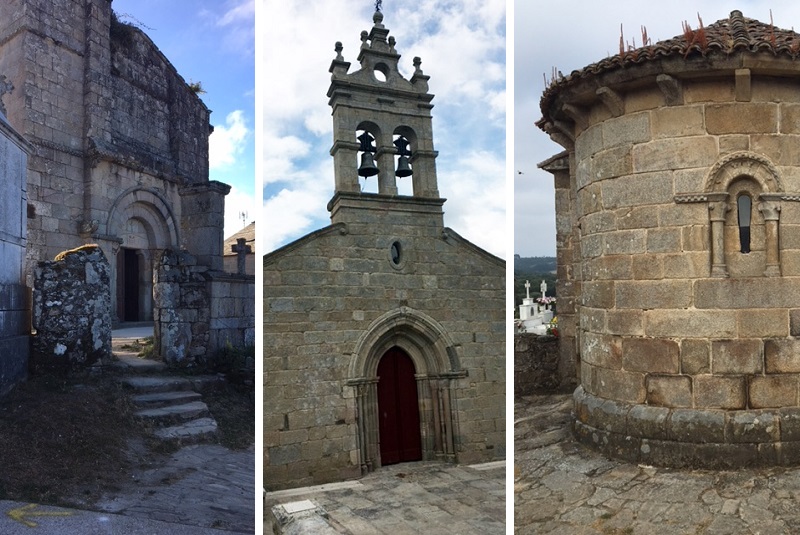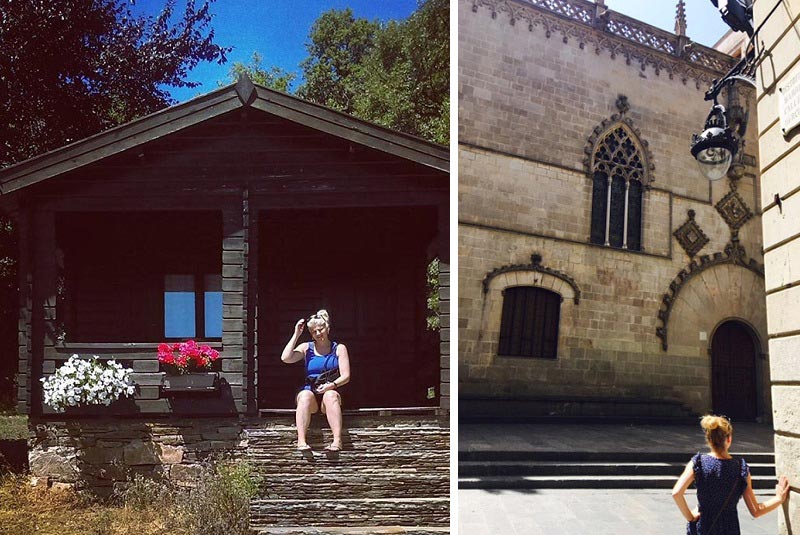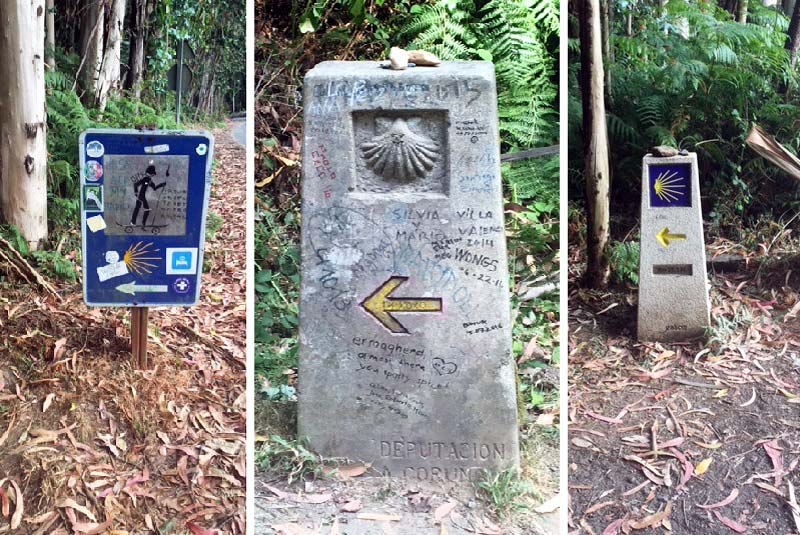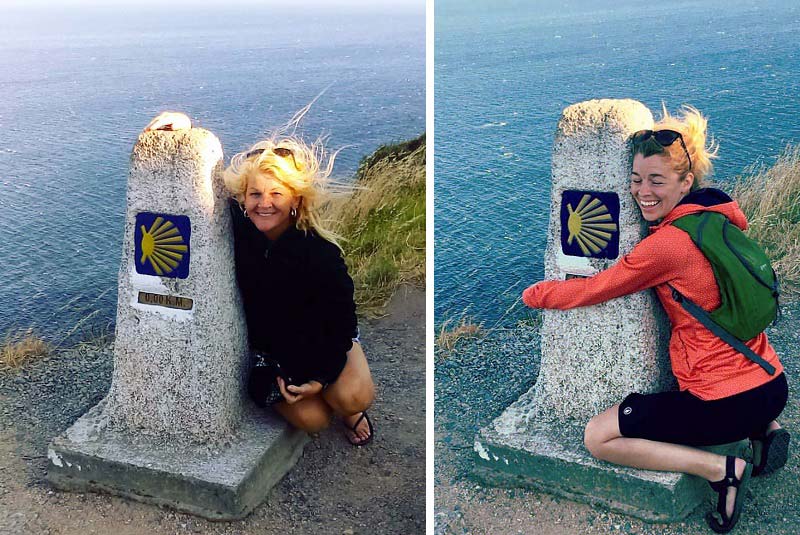The End of the World, with Her


In the summer of 2015, my mom survived a second bout with breast cancer. She’d spent her 50th birthday hoping the chemo killed any leftover cancer cells before it killed her. A month later, she called me and told me to watch The Way on Netflix. In the film, Martin Sheen hikes the ancient pilgrimage route hundreds of miles from the Pyrenees to the Cathedral of Santiago de Compostela. Mom loves God, and she loves walks, and even though she’s a flight attendant, she had never traveled anywhere just because she could. I love walks, too. I watched the movie and told her I liked it.
“So,” she asked, “would you want to go?”
I’d spent her illness jetting between my home in Kansas City to hers on the central coast of California for major surgeries. Still, I’d missed the chemo, which she quit after the first treatment, partially because it was killing her and partially because she couldn’t do it alone. And nobody, including myself, was fully there to help her.Everyone had their excuses—mine being a delayed graduation and no immediate income prospects where she lived. Mom had said she didn’t want me to drop everything to be with her. But, of course, I hadn’t done it for her. I’d done it for me, no matter how I spun it.
So when she asked me for two weeks, I couldn’t say yes fast enough.
* * *
About a year later, we woke up in Sarria, a town in the green rolling farmlands of western Spain, almost exactly 100 kilometers from Santiago de Compostela, from our goal. We started our walk early and way too fast. We raised eyebrows at the weaklings who stopped to sit. At this rate, we figured, we could get to our lodging every day by early afternoon. This might be too easy, we thought. We blew through miles of hilly farmland, every stretch of green terraced into some kind of crop. Stone houses and free-roaming cattle dotted the landscape, and of course there were the churches.

We entered the first church we saw, only a half hour into our walk. The stone building was surrounded by a small graveyard. An elderly man sat at a broad wooden table just inside the doors. A small bowl with 5, 10, and 50 cent Euro coins sat on the table. I immediately panicked. What was the protocol here? Pay first, then enter?
Mom walked down the aisle, enraptured by the hollow quiet of the church, looking toward the saints at the front of the chapel. I tried following her, but I got only as far as the back pew before I remembered that I was an atheist and a hypocrite and I had decided to take a religious pilgrimage with my faithful mother where I would always stop short at the back pew.
I was heathen enough to not pray in this place, and Protestant enough to worry about any possible lightning storms in the area. After a few minutes, we left our coins in the bowl, and the elderly man stamped our pilgrims’ passports, booklets that marked how we stopped along the way. This would be the proof we’d need when we arrived at the Cathedral to claim our certificates.
* * *
Mom had refused to buy the kinds of ugly shoes I prided myself on, and her feet were paying for it by the second full day of walking. Her Nikes were worn to the soles. About five hours into a nine-hour day of walking, we stopped at a small brook. She couldn’t go on. Trees overhead sheltered us from the midday heat, and we sat on a fallen tree crossing the clear, small stream. Mom peeled off her shoes, then her socks. Skin came off with the bloodied cotton. She dipped her feet in the brook and winced. I’d only seen my mom cry from physical pain after her double mastectomy a year and a half before, when the prescription for muscle relaxers was delayed and her muscles constricted tighter and tighter across her rib cage. She wasn’t wincing from the nerves or the blood. Her own body was suffocating her.
A wince from Mom meant more than the average wince.
We debated on whether or not to take a taxi, but eventually Mom was adamant. She wanted to walk. She rolled on a clean pair of socks and strapped on my black Velcro sandals. Pained grimaces and bleeding feet aside, now I knew she meant business. My mom does not wear socks with sandals.

By the time she limped into our stop for the night, Palais de Rei, we were desperate for a pharmacy. Desperate and stupid, because it was Sunday, and nothing in rural Spain stays open on Sundays. We stopped first at our lodging for the night, a bed-and-breakfast run by three sisters in their 80s.
They welcomed us with a flurry of Spanish and tiny gasps over the state of Mom’s feet. An English man wearing an ascot tied around his neck sat cross-legged on a couch in their living room, flipping idly through a guidebook. He had just walked, too. I looked at my own dirty legs in athletic shorts and decided I did not like the collected man in the ascot.
We dropped our bags off in our shared bedroom upstairs, which overlooked a grape-laden trellis and patio. Then we marched off in search of a shop with a small green cross, the symbol for a pharmacy. After we found two pharmacies that were closed, Mom was starting to doubt whether she could keep going.

We rounded the corner of another cobblestone street bordered with tall white buildings and saw it: a single green glowing cross.
We thanked the pharmacist profusely for being open, and she smiled.
“Los pies de mi madre,” I started, and I didn’t need to continue. This pharmacist probably saw dozens of ill-prepared pilgrims limping toward her every day. She loaded the counter with disinfectant and Compeed, a liquid bandage that saved our trip. Mom still limped back to our bed and breakfast, but she no longer bit blood from her lip after each step.
Once Mom and I had both cleaned ourselves up, we ventured back into town, settling on the nearest cafe we could find for dinner. We chose the Pilgrim’s Menu, a daily special of dinner and wine offered at all the stops along the Camino.
One of the people we’d met earlier in our walk, a teacher from Southern California named Laura, wandered outside and joined us on the patio. She and my mom reminisced about the spots they had visited growing up in Southern California—the beaches, the smog days that kept everyone inside, bands I’d never heard of. We drank grappa and ate octopus and talked and laughed.
The next day, I woke up hesitant. I wanted to continue our trek on foot, but I couldn’t bear to ask that of her. I didn’t have to ask.
Mom doused her feet in disinfectant and Compeed, and we stopped in the village to buy some much uglier shoes.
* * *
After three more days of small towns and farmland, café con leche and Albariño, pilgrim’s dinners and conversations with strangers-turned-friends, we arrived in Santiago de Compostela, the city that held the St. James Cathedral. The noise of a city not much different in size from my hometown of Kansas City assaulted our senses. I lost heart at the blare and speed of whizzing cars, the complicated thoroughfares, where getting lost meant needing a map instead of turning around and walking for five more minutes. We stopped first at our hotel, showered, and dressed. Then we walked towards the Cathedral, towards the end of our Camino, or so we thought.
We walked for a couple of miles, our movements awkward in sandals and long skirts. I strolled too quickly, with my back hunched forward, the remembered weight of a loaded pack still in between my shoulder blades.
When we entered the Cathedral square, I wasn’t sure which of the grand buildings was the grand building. Then I saw lines of vendors hocking spinners and seashells and paperweights outside the rear of the church. We walked around the border of this building to the front of the Cathedral of St. James, our destination, our hope, the place we’d walked hundreds of miles and spent thousands of dollars to see.
It was under construction.
I wanted to laugh, but I couldn’t. It was still beautiful, the stately, square towers with their rounded tops, built by so many hands so many years ago. The work of lifetimes, still in need of work. We walked inside.
The statue at the entrance, worn with time and use, was the first test I failed. Tradition (at least according to our Netflix education) calls for you to approach the stone man on your knees, to kiss his feet. Mom did. I choked.
I was back in that first church we’d visited in Sarria, stuck by the back pew, worried about tipping. I worried that I had killed every spiritual part of me when I separated from the institutional religion of my childhood. I worried that the lack of tenderness, the presence of fear and shame, would make me hard over time, arrogant and unbending.
Still, standing in front of this ancient icon we’d broken ourselves to see, I could not make myself believe in anything.
* * *
The day after our journey’s end, we traveled by bus from our destination of Santiago de Compostela to the coastal city of Fisterra, which, as the westernmost part of Spain, translates to “the end of world.” It was Mom’s 51st birthday.
I looked past Mom’s hair out the window. We hadn’t moved more quickly than our feet could carry us for a week, and at first I felt that my organs were being left about six inches behind whatever direction the bus moved in. After 15 minutes, I was used to moving in a blur again. A half hour later, we began nearing the coast. A sapphire ocean loomed outside. We had expected the gray sea and fog of California’s northern beaches. Instead, we got the rich colors of a crayon box, drawn over a world we hadn’t expected.
After we arrived in Fisterra, I talked my mom into walking from our hotel to the lighthouse at the end of the world, the “0,0” marker on the Camino de Santiago. It wasn’t easy. After all, we’d walked a hundred kilometers to the Cathedral. We’d already arrived, hadn’t we? This was just extra. But Mom was a sport, and of course she couldn’t turn down the chance to see the end of the world.
We passed a statue of a medieval pilgrim, hunched forward over a walking stick. The wind whipped my face, pushed me backwards. I could relate. I grabbed a stick and froze in front of the pilgrim, mimicking the man’s tortured face. Mom laughed.
By the time we reached the last marker, I was more than concerned about the speed of the wind and the sheer drop-off of the cliffs around us. The marker—a two-foot-high gray stone with a yellow arrow and shell—was no more than two feet away from said sheer cliff. Figured.
Mom insisted that I take her picture holding the last marker, and then she insisted I get my own picture. It would have been silly to refuse. Besides, the sheer irony of reaching the last marker on an ancient pilgrimage and immediately stumbling off the side of a cliff into an ocean seemed like a statistical anomaly. Or maybe a divine judgment. I shook my head. I could have faith, however delusional and self-serving, in numbers.
I wrapped my arms and legs around the gray stone and smiled a terrified grin at Mom’s phone. Mom wanted to keep going.

We walked up to the westernmost-facing part of the peninsula, where the force of the wind made me want to crawl on my hands and knees. Mom walked toward the very edge of the cliff. I hung back 10 feet, calling scared and annoyed warnings to her. She ignored them.
She looked out at the setting sun, still high in our home country. The wind whipped her hair around her head, but she was still.
I sat down and watched her, wrapped my arms around my knees. And there, looking at my mother looking at things I couldn’t see, I realized my destination.
It wasn’t ever a church or a town or a tomb. It was here, the end of the world, with her. I believed in long walks for no clear reason. I believed in café con leche and good wool socks.
I believed in what I saw with my own eyes. I believed in my mother, looking over the Atlantic from a brand-new direction. I believed in the scientific reality and the mind-bending complexity of the sunset in front of us also being the sunrise ahead of us—the light for where we had been and where we would return. I believed in a woman who survived tumors and heartbreak and poison and loneliness and still gripped her toes on a cliff at the end of the world.
# # # # #
Photos by Ariel and Kim Andrew
If you’re interested in adventures that cross pilgrims’ paths, consider Journey to Ancient Japan and Invitation to Nepal, as well as our trips in Tibet, Cambodia, Silk Road, and Sri Lanka (including a special departure led by acclaimed Buddhist scholar Robert Thurman).

